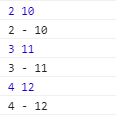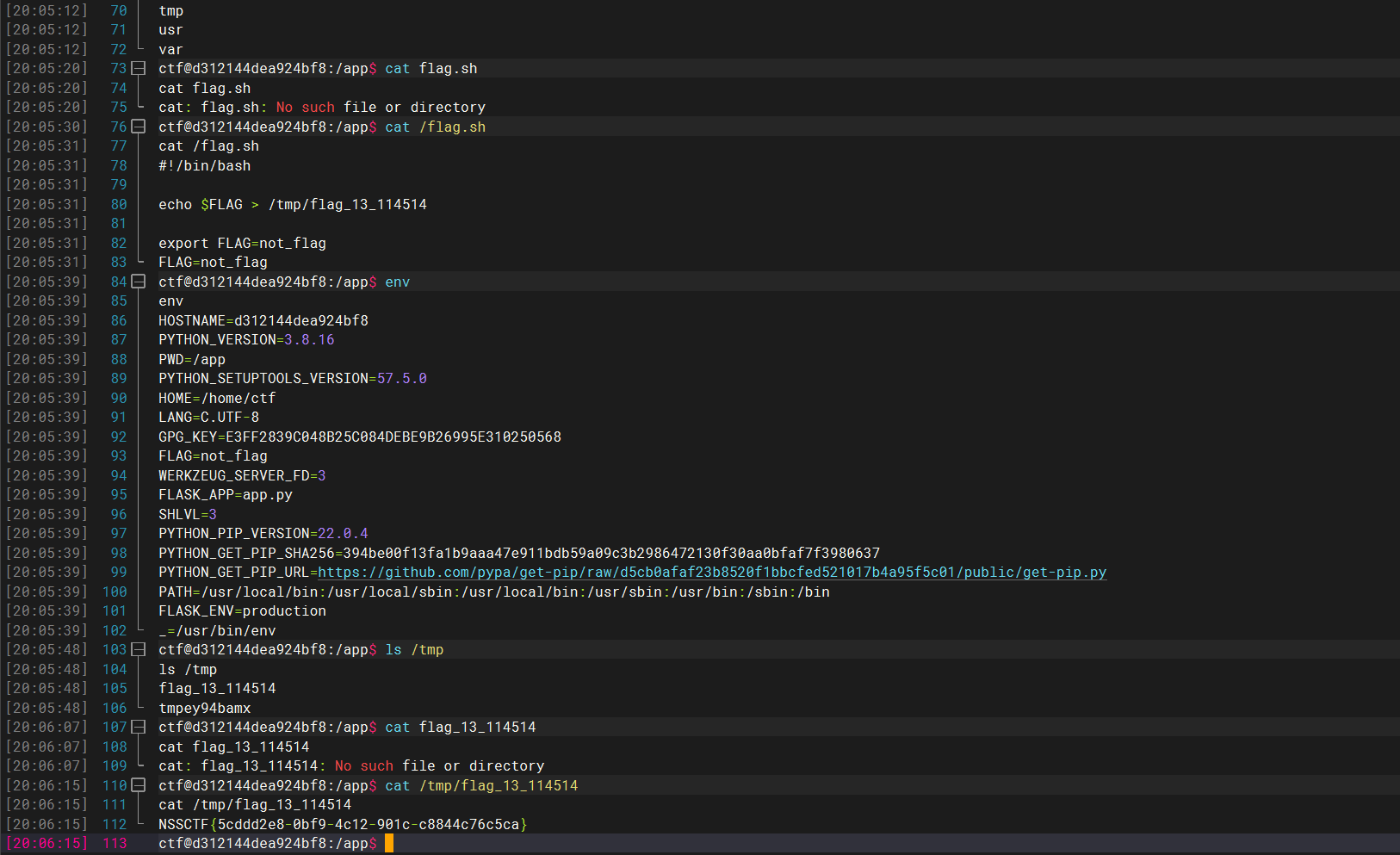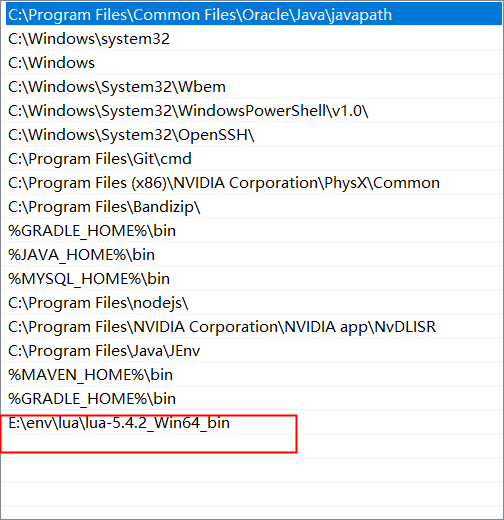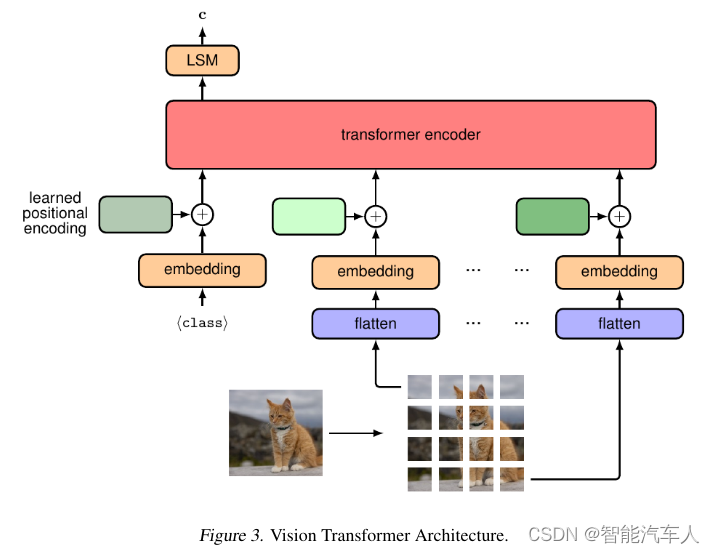目录
- 1 多类别分类模型
- 1.1 创建数据
- 1.2 创建模型
- 1.3 模型传出的数据
- 1.4 损失函数和优化器
- 1.5 训练和测试
- 1.6 衡量模型性能的指标
- 2 练习Exercise
之前我们已经学习了 二分类问题,二分类就像抛硬币正面和反面,只有两种情况。
这里我们要探讨一个 多类别分类模型,比如输入一张图片,分类它是pizza、牛排或者寿司,这里的类别是三,就是多类别分类问题。
1 多类别分类模型
1.1 创建数据
# 创建数据
from sklearn.datasets import make_blobs
import torch
from sklearn.model_selection import train_test_split
import matplotlib.pyplot as plt
import torch.nn as nn
import torch.optim as optimRANDOM_SEED = 42
NUM_CLASSES = 4
NUM_FEATURES = 2# 创建多类别数据
X, y = make_blobs(n_samples = 1000,n_features = NUM_FEATURES, # X featurescenters = NUM_CLASSES, # y labelscluster_std = 1.5, # 让数据抖动random_state = RANDOM_SEED)# 将数据转换为 tensor
X = torch.from_numpy(X).type(torch.float)
y = torch.from_numpy(y).type(torch.LongTensor)print(X.dtype, y.dtype)
torch.float32 torch.int64
# 将数据集划分训练集和测试集
X_train, X_test, y_train, y_test = train_test_split(X,y,test_size=0.2,random_state=RANDOM_SEED)
len(X_train), len(y_train), len(X_test), len(y_test)
print(X_train[:5], y_train[:5])
tensor([[ 5.0405, 3.3076],
[-2.6249, 9.5260],
[-8.5240, -9.0402],
[-6.0262, -4.4375],
[-3.3397, 7.2175]]) tensor([1, 0, 2, 2, 0])
# 可视化数据
plt.figure(figsize=(10, 7))
plt.scatter(X[:,0], X[:,1], c=y, cmap=plt.cm.RdYlBu)

# 创建设备无关的代码
device = "cuda" if torch.cuda.is_available() else "cpu"
device
‘cuda’
1.2 创建模型
# 创建模型
# 这次创建模型特殊的点在于我们在 __init__()括号的参数选择中,多添加了参数
# input_features:输入 output_features:输出 hidden_units:隐藏层中神经元的个数
class BlobModel(nn.Module):def __init__(self, input_features, output_features, hidden_units=8):super().__init__()self.linear_stack = nn.Sequential(nn.Linear(in_features=input_features, out_features=hidden_units),nn.ReLU(),nn.Linear(in_features=hidden_units, out_features=hidden_units),nn.ReLU(),nn.Linear(in_features=hidden_units, out_features=output_features))def forward(self, x):return self.linear_stack(x)model_0 = BlobModel(input_features=NUM_FEATURES, output_features=NUM_CLASSES, hidden_units=8).to(device)
model_0
BlobModel(
(linear_stack): Sequential(
(0): Linear(in_features=2, out_features=8, bias=True)
(1): ReLU()
(2): Linear(in_features=8, out_features=8, bias=True)
(3): ReLU()
(4): Linear(in_features=8, out_features=4, bias=True)
)
)
# 将数据和模型统一到目标设备上
X_train, y_train = X_train.to(device), y_train.to(device)
X_test, y_test = X_test.to(device), y_test.to(device)1.3 模型传出的数据
# 先看一下模型会传出什么数据吧
model_0.eval()
with torch.inference_mode():y_logits = model_0(X_train)print(y_logits[:5])
print(y_train[:5])
tensor([[-0.7333, -0.0491, -0.1253, 0.2468],
[-0.6059, 0.0958, 0.1232, 0.0641],
[ 1.1539, 0.1951, -0.1268, -1.1032],
[ 0.6424, 0.1891, -0.1171, -0.7310],
[-0.4519, 0.1914, 0.0589, 0.0031]], device=‘cuda:0’)
tensor([1, 0, 2, 2, 0], device=‘cuda:0’)
很明显这里模型的输出和我们真实的输出是不一样的,是无法进行比较的,所以我们需要将logits -> prediction probabilities -> prediction labels
logits 就是我们模型原始的输出, prediction probabilities 是预测概率,表示我将这个数据预测为这个类别的概率,概率值最大的,那模型就可以认为数据被分为这个类最可靠最可信 prediction labels 预测标签,比如这里我们有四类数据,就是 [0, 1, 2, 3]
还记得我们之前是如何将 logits -> prediction probabilities 的吗?之前的二分类,我们使用的是sigmoid(),这里多类比分类,我们使用softmax方法
y_pred_probs = torch.softmax(y_logits, dim=1)
y_pred_probs
tensor([[0.1336, 0.2649, 0.2454, 0.3561],
[0.1420, 0.2863, 0.2943, 0.2774],
[0.5663, 0.2171, 0.1573, 0.0593],
…,
[0.1361, 0.2749, 0.3078, 0.2811],
[0.4910, 0.2455, 0.1806, 0.0829],
[0.1920, 0.3041, 0.2983, 0.2056]], device=‘cuda:0’)
# 上次二分类我们使用的 torch.round() 进行四舍五入, 那这里我们的多类别分类该如何进行呢?
# 由于这里四个类别,我们选取概率最大的值,找到概率最大值的下标位置,我们就知道它是哪个类别了
# 想起来,我们学过的tensor基础课了么
# 没错,就是 argmax() 返回最大值的位置
y_preds = torch.argmax(y_pred_probs[0])
print(y_preds)
tensor(3, device=‘cuda:0’)
这里的数据都是随机的,是没有训练的,所以效果是不太好的。
1.4 损失函数和优化器
# 创建损失函数
loss_fn = nn.CrossEntropyLoss()# 创建优化器
optimizer = optim.SGD(params=model_0.parameters(),lr=0.1)
# 定义一个计算Accuracy的函数
def accuracy_fn(y_true, y_pred):correct = torch.eq(y_true, y_pred).sum().item()return (correct / len(y_pred))*100
1.5 训练和测试
# 训练数据
# 设置训练周期
epochs = 100for epoch in range(epochs):# 模型训练model_0.train()y_logits = model_0(X_train)y_preds = torch.softmax(y_logits, dim=1).argmax(dim=1)loss = loss_fn(y_logits, y_train)acc = accuracy_fn(y_true=y_train,y_pred = y_preds)optimizer.zero_grad()loss.backward()optimizer.step()# 模型测试model_0.eval()with torch.inference_mode():test_logits = model_0(X_test)test_preds = torch.softmax(test_logits, dim=1).argmax(dim=1)test_loss = loss_fn(test_logits,y_test)test_acc = accuracy_fn(y_true=y_test,y_pred=test_preds)# 打印输出if epoch % 10 == 0:print(f"Epoch:{epoch} | Train Loss:{loss:.4f} | Train Accuracy:{acc:.2f}% | Test Loss:{test_loss:.4f} | Test Accuracy:{test_acc:.2f}%")
Epoch:0 | Train Loss:1.5929 | Train Accuracy:1.88% | Test Loss:1.2136 | Test Accuracy:31.50%
Epoch:10 | Train Loss:0.9257 | Train Accuracy:53.37% | Test Loss:0.8747 | Test Accuracy:72.00%
Epoch:20 | Train Loss:0.6246 | Train Accuracy:91.25% | Test Loss:0.5729 | Test Accuracy:97.00%
Epoch:30 | Train Loss:0.2904 | Train Accuracy:97.62% | Test Loss:0.2503 | Test Accuracy:99.00%
Epoch:40 | Train Loss:0.1271 | Train Accuracy:99.12% | Test Loss:0.1101 | Test Accuracy:99.00%
Epoch:50 | Train Loss:0.0771 | Train Accuracy:99.25% | Test Loss:0.0668 | Test Accuracy:99.00%
Epoch:60 | Train Loss:0.0576 | Train Accuracy:99.12% | Test Loss:0.0488 | Test Accuracy:99.00%
Epoch:70 | Train Loss:0.0479 | Train Accuracy:99.12% | Test Loss:0.0396 | Test Accuracy:99.50%
Epoch:80 | Train Loss:0.0422 | Train Accuracy:99.12% | Test Loss:0.0339 | Test Accuracy:99.50%
Epoch:90 | Train Loss:0.0385 | Train Accuracy:99.12% | Test Loss:0.0302 | Test Accuracy:99.50%
# 可视化
from helper_functions import plot_decision_boundary
plt.figure(figsize=(12, 6))
plt.subplot(1, 2, 1)
plt.title("Train")
plot_decision_boundary(model=model_0, X=X_train, y=y_train)
plt.subplot(1, 2, 2)
plt.title("Test")
plot_decision_boundary(model=model_0, X=X_test, y=y_test)

哇塞,这个分类很赞吧,但是看这个划分,我们可以观察出可能不使用非线性函数也可以,咱们把模型里面的ReLU()去掉就可以啦,大家自己去试试吧,这里就不赘述啦~
1.6 衡量模型性能的指标
衡量一个模型的性能,不只是有accuracy,还有其他的,比如说:
- F1 score
- Precison
- Recall
- Confusion matrix
- Accuracy
from torchmetrics import Accuracytorchmetrics_accuracy = Accuracy(task='multiclass', num_classes=4).to(device)# 计算准确度
torchmetrics_accuracy(test_preds, y_test)
tensor(0.9950, device=‘cuda:0’)
OK,我们还可以调用函数计算准确度呢!结束了这里的学习,开始我们的练习来检测我们的学习吧~
2 练习Exercise
1. Make a binary classification dataset with Scikit-Learn’s
make_moons()function.
* For consistency, the dataset should have 1000 samples and arandom_state=42.
* Turn the data into PyTorch tensors. Split the data into training and test sets usingtrain_test_splitwith 80% training and 20% testing.
from sklearn.datasets import make_moons
from sklearn.model_selection import train_test_split
import matplotlib.pyplot as plt
import torch
import torch.nn as nn
import torch.optim as optimRANDOM_SEED = 42X, y = make_moons(n_samples=1000,noise=0.03,random_state=RANDOM_SEED)X[:5], y[:5]
(array([[-0.00933187, 0.39098105],
[ 0.95457387, -0.47375583],
[ 0.9185256 , -0.42519648],
[ 0.41276802, -0.37638459],
[-0.84532016, 0.52879908]]),
array([1, 1, 1, 1, 0], dtype=int64))
# 可视化数据
plt.figure(figsize=(10, 7))
plt.scatter(X[:,0], X[:,1], c=y, cmap=plt.cm.RdYlBu)

查看数据,我们发现,特征输入是2,输出是1,哇,看图像,是个二分类喔,这个模型肯定是要用到非线性的.
# 将数据转换为 Tensor
X = torch.from_numpy(X).type(torch.float)
y = torch.from_numpy(y).type(torch.float)
print(X.dtype, y.dtype)
print(X[:5], y[:5])
torch.float32 torch.float32
tensor([[-0.0093, 0.3910],
[ 0.9546, -0.4738],
[ 0.9185, -0.4252],
[ 0.4128, -0.3764],
[-0.8453, 0.5288]]) tensor([1., 1., 1., 1., 0.])
# 将数据划分为训练集和测试集
X_train, X_test, y_train, y_test = train_test_split(X, y,test_size=0.2,random_state=RANDOM_SEED)
len(X_train), len(X_test), len(y_train), len(y_test)
(800, 200, 800, 200)
2. Build a model by subclassing
nn.Modulethat incorporates non-linear activation functions and is capable of fitting the data you created in 1.
* Feel free to use any combination of PyTorch layers (linear and non-linear) you want.
# 设备无关
device = "cuda" if torch.cuda.is_available() else "cpu"
device
‘cuda’
class MoonModel(nn.Module):def __init__(self, input_features, output_features, hidden_units):super().__init__()self.linear_stack = nn.Sequential(nn.Linear(in_features=input_features, out_features=hidden_units),# nn.ReLU(),nn.Tanh(),nn.Linear(in_features=hidden_units, out_features=hidden_units),# nn.ReLU(),nn.Tanh(),nn.Linear(in_features=hidden_units, out_features=output_features))def forward(self, x):return self.linear_stack(x)model_0 = MoonModel(input_features=2,output_features=1, hidden_units=10).to(device)
model_0
MoonModel(
(linear_stack): Sequential(
(0): Linear(in_features=2, out_features=10, bias=True)
(1): Tanh()
(2): Linear(in_features=10, out_features=10, bias=True)
(3): Tanh()
(4): Linear(in_features=10, out_features=1, bias=True)
)
)
3. Setup a binary classification compatible loss function and optimizer to use when training the model.
# 损失函数和优化器
loss_fn = nn.BCEWithLogitsLoss()
optimizer = optim.SGD(params=model_0.parameters(),lr=0.1)
4. Create a training and testing loop to fit the model you created in 2 to the data you created in 1.
* To measure model accuray, you can create your own accuracy function or use the accuracy function in TorchMetrics.
* Train the model for long enough for it to reach over 96% accuracy.
* The training loop should output progress every 10 epochs of the model’s training and test set loss and accuracy.
# 将数据都放到统一的设备上
X_train, y_train = X_train.to(device), y_train.to(device)
X_test, y_test = X_test.to(device), y_test.to(device)
# 计算正确率的函数
def accuracy_fn(y_true, y_pred):correct = torch.eq(y_true, y_pred).sum().item()return (correct / len(y_pred))*100
print(y_logits.shape, y_train.shape)
print(len(y_train))
torch.Size([240, 3]) torch.Size([800])
800
# 训练和测试# 设置训练周期
epochs = 1000for epoch in range(epochs):# 训练model_0.train()y_logits = model_0(X_train).squeeze()y_preds = torch.round(torch.sigmoid(y_logits))loss = loss_fn(y_logits, y_train)acc = accuracy_fn(y_true=y_train,y_pred=y_preds)optimizer.zero_grad()loss.backward()optimizer.step()# 测试model_0.eval()with torch.inference_mode():test_logits = model_0(X_test).squeeze()test_preds = torch.round(torch.sigmoid(test_logits))test_loss = loss_fn(test_logits,y_test)test_acc = accuracy_fn(y_true=y_test,y_pred=test_preds)# 打印输出if epoch % 10 == 0:print(f"Epoch:{epoch} | Train Loss:{loss:.4f} | Train Accuracy:{acc:.2f}% | Test Loss:{test_loss:.4f} | Test Accuracy:{test_acc:.2f}%")Epoch:0 | Train Loss:0.7151 | Train Accuracy:30.63% | Test Loss:0.7045 | Test Accuracy:34.50%
Epoch:10 | Train Loss:0.6395 | Train Accuracy:80.50% | Test Loss:0.6378 | Test Accuracy:76.00%
Epoch:20 | Train Loss:0.5707 | Train Accuracy:79.88% | Test Loss:0.5754 | Test Accuracy:75.00%
…
Epoch:990 | Train Loss:0.0172 | Train Accuracy:100.00% | Test Loss:0.0150 | Test Accuracy:100.00%
Output is truncated. View as a scrollable element or open in a text editor. Adjust cell output settings…
5. Make predictions with your trained model and plot them using the
plot_decision_boundary()function created in this notebook.
# 可视化
from helper_functions import plot_decision_boundary
plt.figure(figsize=(12, 6))
plt.subplot(1, 2, 1)
plt.title("Training")
plot_decision_boundary(model=model_0, X=X_train, y=y_train)
plt.subplot(1, 2, 2)
plt.title("Testing")
plot_decision_boundary(model=model_0, X=X_test, y=y_test)

6. Replicate the Tanh (hyperbolic tangent) activation function in pure PyTorch.
* Feel free to reference the ML cheatsheet website for the formula.
这个只需要将模型里面的ReLU()激活函数换为Tanh()即可
7. Create a multi-class dataset using the spirals data creation function from CS231n (see below for the code).
* Construct a model capable of fitting the data (you may need a combination of linear and non-linear layers).
* Build a loss function and optimizer capable of handling multi-class data (optional extension: use the Adam optimizer instead of SGD, you may have to experiment with different values of the learning rate to get it working).
* Make a training and testing loop for the multi-class data and train a model on it to reach over 95% testing accuracy (you can use any accuracy measuring function here that you like).
* Plot the decision boundaries on the spirals dataset from your model predictions, theplot_decision_boundary()function should work for this dataset too.
# Code for creating a spiral dataset from CS231n
import numpy as np
N = 100 # number of points per class
D = 2 # dimensionality
K = 3 # number of classes
X = np.zeros((N*K,D)) # data matrix (each row = single example)
y = np.zeros(N*K, dtype='uint8') # class labels
for j in range(K):ix = range(N*j,N*(j+1))r = np.linspace(0.0,1,N) # radiust = np.linspace(j*4,(j+1)*4,N) + np.random.randn(N)*0.2 # thetaX[ix] = np.c_[r*np.sin(t), r*np.cos(t)]y[ix] = j
# lets visualize the data
plt.scatter(X[:, 0], X[:, 1], c=y, s=40, cmap=plt.cm.Spectral)
plt.show()
# 创建 spiral 数据集
RANDOM_SEED = 42import numpy as np
N = 100 # 每一类点的数量
D = 2 # 维度
K = 3 # 类别的数量
X = np.zeros((N*K, D))
y = np.zeros(N*K, dtype='uint8') # 类别标签
for j in range(K):ix = range(N*j, N*(j+1))r = np.linspace(0.0, 1, N) # 半径t = np.linspace(j*4, (j+1)*4, N) + np.random.randn(N) * 0.2 # thetaX[ix] = np.c_[r*np.sin(t), r*np.cos(t)]y[ix] = j# 数据可视化
plt.scatter(X[:,0], X[:,1],c=y, s=40, cmap=plt.cm.Spectral)
plt.show()

print(X[:5],y[:5])
print(X.shape, y.shape)
[[0. 0. ]
[0.00183158 0.00993357]
[0.00362348 0.01987441]
[0.00290204 0.03016375]
[0.00458536 0.04014301]] [0 0 0 0 0]
(300, 2) (300,)
可以看出我们的数据,输入是2,输出是3,3个类别嘛
# 将数据转化为tensor
X = torch.from_numpy(X).type(torch.float)
y = torch.from_numpy(y).type(torch.LongTensor)
X.dtype, y.dtype
(torch.float32, torch.int64)
# 将数据划分为训练集和测试集
X_train, X_test, y_train, y_test = train_test_split(X,y,test_size=0.2,random_state=RANDOM_SEED)
len(X_train), len(X_test), len(y_train), len(y_test)
(240, 60, 240, 60)
len(X), len(y)
(300, 300)
# 设备无关
device = "cuda" if torch.cuda.is_available() else "cpu"
device
‘cuda’
# 将数据放到统一的设备上
X_train, y_train = X_train.to(device), y_train.to(device)
X_test, y_test = X_test.to(device), y_test.to(device)
# 创建模型
class SpiralModel(nn.Module):def __init__(self, input_features, output_features, hidden_layers):super().__init__()self.linear_stack = nn.Sequential(nn.Linear(in_features=input_features, out_features=hidden_layers),nn.Tanh(),nn.Linear(in_features=hidden_layers, out_features=hidden_layers),nn.Tanh(),nn.Linear(in_features=hidden_layers, out_features=output_features))def forward(self, x):return self.linear_stack(x)model_1 = SpiralModel(2, 3, 10).to(device)
model_1
SpiralModel(
(linear_stack): Sequential(
(0): Linear(in_features=2, out_features=10, bias=True)
(1): Tanh()
(2): Linear(in_features=10, out_features=10, bias=True)
(3): Tanh()
(4): Linear(in_features=10, out_features=3, bias=True)
)
)
# 损失函数和优化器
loss_fn = nn.CrossEntropyLoss()
optimizer = optim.Adam(params=model_1.parameters(),lr=0.1)
print(y_logits.shape)
print(y_train.shape)
print(y_preds)
torch.Size([800])
torch.Size([240])
tensor([1., 0., 0., 0., 1., 0., 1., 1., 0., 0., 1., 0., 0., 0., 1., 0., 0., 0.,
0., 1., 1., 1., 0., 1., 1., 1., 0., 0., 0., 0., 0., 0., 0., 1., 0., 0.,
1., 1., 1., 1., 1., 1., 0., 1., 0., 1., 0., 0., 0., 0., 0., 1., 0., 1.,
…
1., 1., 0., 0., 0., 0., 1., 1., 1., 0., 1., 0., 1., 0., 1., 1., 1., 0.,
0., 1., 0., 0., 1., 1., 1., 1., 0., 1., 0., 1., 0., 1., 1., 0., 0., 1.,
1., 1., 0., 1., 0., 0., 0., 1.], device=‘cuda:0’,
grad_fn=)
Output is truncated. View as a scrollable element or open in a text editor. Adjust cell output settings…
torch.manual_seed(RANDOM_SEED)
torch.cuda.manual_seed(RANDOM_SEED)# 训练和测试
epochs = 100for epoch in range(epochs):# 训练model_1.train()y_logits = model_1(X_train)y_preds = torch.softmax(y_logits, dim=1).argmax(dim=1)loss = loss_fn(y_logits, y_train)acc = accuracy_fn(y_true=y_train,y_pred=y_preds)optimizer.zero_grad()loss.backward()optimizer.step()# 测试model_1.eval()with torch.inference_mode():test_logits = model_1(X_test)test_preds = torch.softmax(test_logits, dim=1).argmax(dim=1)test_loss = loss_fn(test_logits, y_test)test_acc = accuracy_fn(y_true=y_test,y_pred=test_preds)# 打印输出if epoch % 10 == 0:print(f"Epoch:{epoch} | Train Loss:{loss:.4f} | Train Accuracy:{acc:.2f}% | Test Loss:{test_loss:.4f} | Test Accuracy:{test_acc:.2f}%")
Epoch:0 | Train Loss:1.1065 | Train Accuracy:35.00% | Test Loss:0.9883 | Test Accuracy:40.00%
Epoch:10 | Train Loss:0.7705 | Train Accuracy:54.58% | Test Loss:0.7651 | Test Accuracy:55.00%
Epoch:20 | Train Loss:0.5308 | Train Accuracy:76.25% | Test Loss:0.4966 | Test Accuracy:75.00%
Epoch:30 | Train Loss:0.2872 | Train Accuracy:93.33% | Test Loss:0.2097 | Test Accuracy:95.00%
Epoch:40 | Train Loss:0.1477 | Train Accuracy:95.00% | Test Loss:0.0998 | Test Accuracy:98.33%
Epoch:50 | Train Loss:0.0820 | Train Accuracy:97.50% | Test Loss:0.0472 | Test Accuracy:100.00%
Epoch:60 | Train Loss:0.0488 | Train Accuracy:99.17% | Test Loss:0.0247 | Test Accuracy:100.00%
Epoch:70 | Train Loss:0.0418 | Train Accuracy:97.92% | Test Loss:0.0127 | Test Accuracy:100.00%
Epoch:80 | Train Loss:0.0307 | Train Accuracy:99.17% | Test Loss:0.0168 | Test Accuracy:100.00%
Epoch:90 | Train Loss:0.0282 | Train Accuracy:99.17% | Test Loss:0.0060 | Test Accuracy:100.00%
# 可视化看一下
plt.figure(figsize=(12, 6))
plt.subplot(1, 2, 1)
plt.title("Training")
plot_decision_boundary(model=model_1, X=X_train, y=y_train)
plt.subplot(1, 2, 2)
plt.title("Testing")
plot_decision_boundary(model=model_1, X=X_test, y=y_test)

哇,看这个图像拟合的多么好,太厉害了!
This work is so good!
BB,今天的学习就到这里啦!
话说户部巷烤面筋尊嘟嘎嘎好吃捏
BB,如果文档对您有用的话,记得给我点个赞赞撒!
靴靴BB,谢谢BB~


![[PM]产品运营](https://img-blog.csdnimg.cn/img_convert/26a271d8cd6be477e599b603fac09760.png)




![【2024最新华为OD-C/D卷试题汇总】[支持在线评测] LYA的生日派对座位安排(200分) - 三语言AC题解(Python/Java/Cpp)](https://i-blog.csdnimg.cn/direct/5ec34571e93c408a97a960cb336ea0a5.png)











